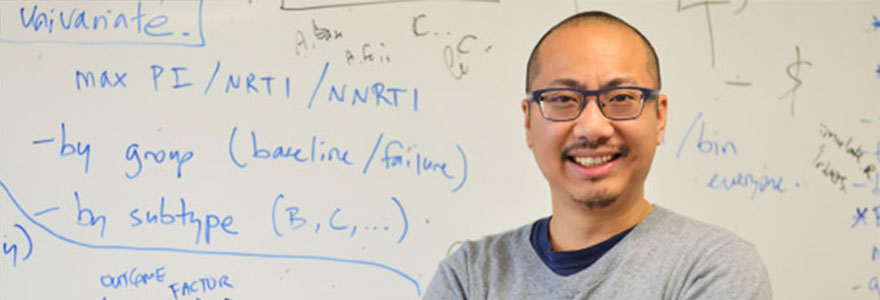Art Poon receives CIHR Project Grant

Please join us in offering our sincere congratulations to Dr. Art Poon, who has received a 1-year CIHR Project Grant for his project titled "Phylodynamics of HIV within hosts."
Total award $100,000.
Abstract: New computational methods for HIV cure research
Human immunodeficiency virus (HIV) infects different parts of the body and types of cells, including cells that play an important role in our immune system. Furthermore, an infected cell can become “latent” so that it does not produce new copies of the virus, making it essentially invisible to the immune system and drug treatments, only to become reactivated months or years afterwards. The existence of these reservoirs of latently infected cells is a key reason why it is so difficult to cure an HIV infection. HIV also evolves rapidly because it makes many mistakes when copying its own genome. This rapid evolution makes it possible to infer how different copies of a virus from the same patient are related. These evolutionary relationships are usually represented by a tree or “phylogeny”. Phylodynamics is a new interdisciplinary field where the shape of a phylogeny is used to reconstruct how an epidemic has spread through a human population. Methods from phylodynamics have already made enormous impacts on our understanding of HIV, influenza A virus, and the recent Ebolavirus outbreak in West Africa. Our proposal is a completely novel application of phylodynamic methods to examine the proliferation of HIV within patients. We will extend techniques from pattern recognition being developed in our lab to enable computers to extract information about HIV latency and its spread among different populations of cells from the shapes of phylogenetic trees. The key expected benefits of the proposed research are to inform the development of HIV cure strategies by reconstructing how the virus spreads among different cell types and tissues, and their respective characteristics as potential latent reservoirs.








